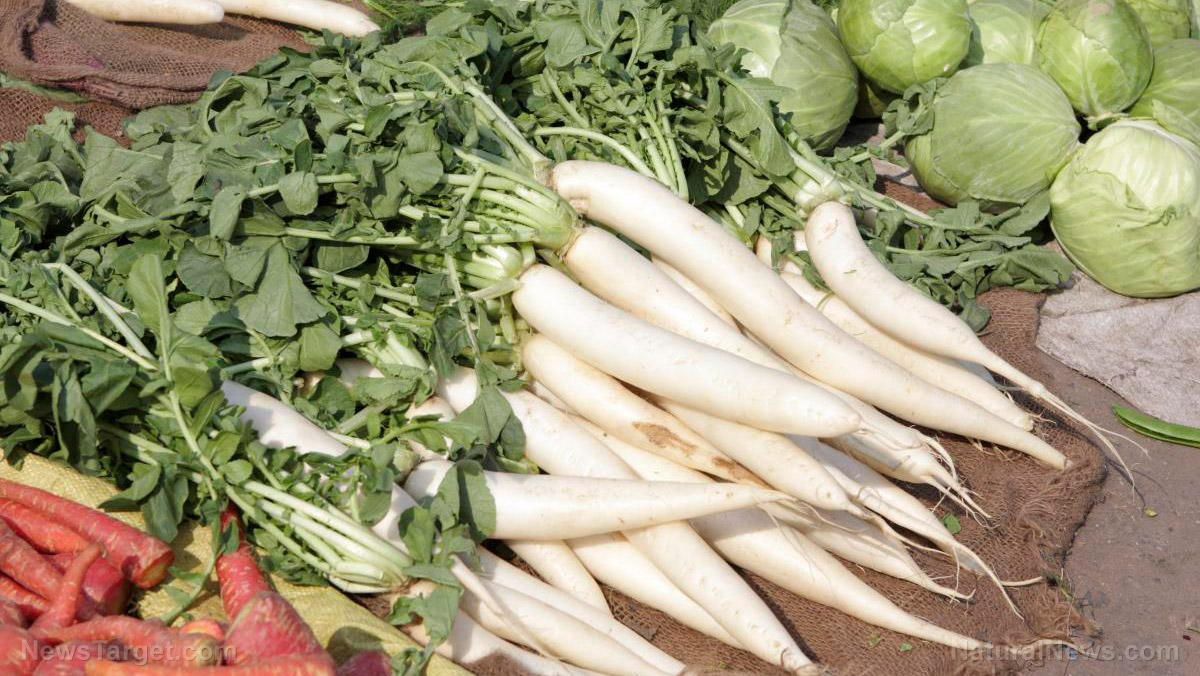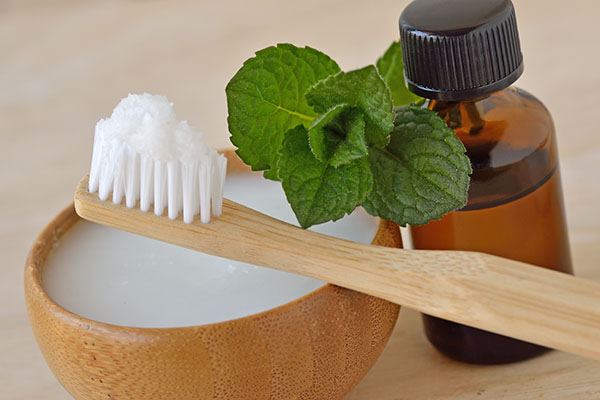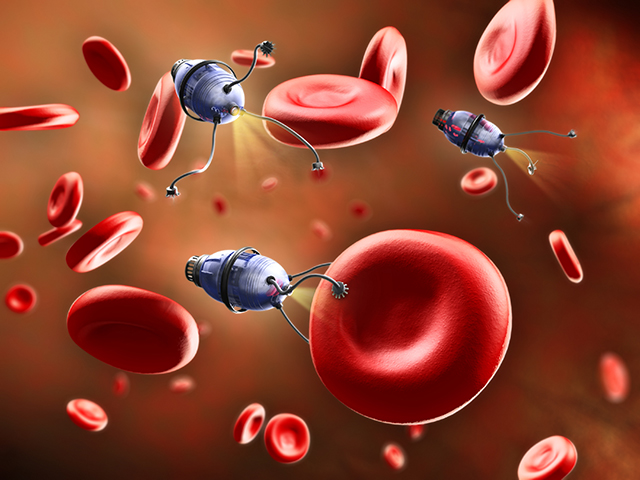Radish: A crunchy root vegetable to boost your nutrition
By lauraharris // 2025-08-11
Tweet
Share
Copy

- Radishes come in five main types (small-rooted European, large-rooted Asian, black-rooted, rat-tail and fodder). Indigenous to Europe and Asia, they were domesticated independently in the Mediterranean and China 2,000 to 5,000 years ago.
- Low in calories but rich in vitamin C, fiber, potassium and antioxidants (like sulforaphane and anthocyanins), radishes can support immunity, digestion and heart health.
- Radishes may also help reduce cancer risk, lower inflammation, regulate blood pressure and promote gut health due to their fiber and bioactive compounds.
- While generally low in pesticides, some radishes may contain traces of neonicotinoids. Opting for organic produce and thoroughly washing/peeling radishes help reduce exposure to contaminants.
- Radishes can be eaten raw, pickled, roasted or fermented (e.g., in salads, kimchi or Mexican snacks). Even the greens are edible and nutritious.
Brief history of radishes
Radishes (Raphanus sativus) belong to the mustard family, which includes other nutrient-dense vegetables like broccoli, kale and cabbage. Radishes are known for their crisp texture and sharp, sometimes spicy flavor. They are believed to have originated in Southeast Asia, with evidence of cultivation dating back to around 2,700 BCE. Radishes were later grown in China, Greece and Rome, where they were used for culinary and medicinal purposes. By the 16th century, radishes had spread across Europe and were eventually introduced to the Americas by European settlers. Today, radishes come in a wide variety of shapes, sizes and colors. Common types include the small, round, red radishes often found in grocery stores; the elongated daikon radishes popular in Asian cuisine; and the black radishes widely used in traditional medicine. (Related: Home gardening tips: How to grow and harvest radishes.) Radishes are grown worldwide, with significant production occurring in Florida and California. Their versatility allows them to be eaten fresh, cooked or incorporated into various dishes, from salads to Asian stir-fries and fermented preparations.Nutritional profile and health benefits
Radishes are low in calories but high in essential nutrients, making them an excellent addition to a balanced diet. Here are the key nutrients offered by raw radishes per 100 grams (g):- 16 kcal of calories
- 1.6g of fiber
- 14.8mg of vitamin C
- 233mg of potassium
- Folate (B9)
- Antioxidants like anthocyanins, quercetin and sulforaphane
- 95 percent water content
Supports digestion
- Radishes are rich in fiber, which promotes gut health by adding bulk to stool and preventing constipation. The lignin in radishes, a type of insoluble fiber, also aids in maintaining regular bowel movements and reducing bloating.
Boosts immunity
- The high vitamin C content in radishes enhances white blood cell function, helping the body fight infections more effectively. This nutrient also acts as an antioxidant, protecting cells from damage caused by free radicals.
May reduce cancer risk
- Radishes contain sulforaphane, a compound that has been linked to detoxifying carcinogens and inhibiting the growth of cancer cells. Studies suggest that regular consumption of cruciferous vegetables like radishes may lower the risk of certain cancers.
Heart health
- The potassium in radishes helps regulate blood pressure by balancing sodium levels in the body. Additionally, their fiber content may contribute to lowering cholesterol, reducing the risk of cardiovascular disease.
Anti-inflammatory properties
- Radishes contain antioxidants and bioactive compounds that help reduce oxidative stress, a key factor in chronic inflammation. This makes them beneficial for managing conditions like arthritis and other inflammatory diseases.
Culinary uses of radishes
Radishes add a refreshing crunch and peppery kick to dishes. Here are some popular ways to eat them:- Salads – Thinly sliced radishes add texture to green salads.
- Pickled radishes – A staple in Korean cuisine (danmuji).
- Roasted radishes – Mellow their sharpness when cooked.
- Radish kimchi – Fermented for gut health benefits.
- Radish greens pesto – Don't discard the leaves, they're edible and nutritious!
- Mexican street snacks – Sliced radishes with lime and chili powder (rábanos).
More related stories:
10 reasons to eat a radish: Nutrients and health benefits.
The radish is linked to cardiovascular, urinary health, among other benefits. Sources include: Brighteon.AI NaturalNews.com Brighteon.comTweet
Share
Copy
Tagged Under:
superfood nutrients diet organic healthy lifestyle food science vegetable conventional radish food ingredients veggie goodhealth goodfood health science nutritive Ingredients radish recipe
You Might Also Like
Nature’s prescription: Living near parks and water can shield older adults from mental decline
By Evangelyn Rodriguez // Share
By Lance D Johnson // Share
Recent News
The silent alarm: Why hand numbness demands your attention
By willowt // Share
Hunter Biden DISBARRED in Connecticut over firearm and tax convictions
By ramontomeydw // Share
Israel announces plan to demolish residential buildings in West Bank's Nur Shams camp
By kevinhughes // Share
Microscopic robotics: Tiny machines now sense, think and act autonomously
By patricklewis // Share











